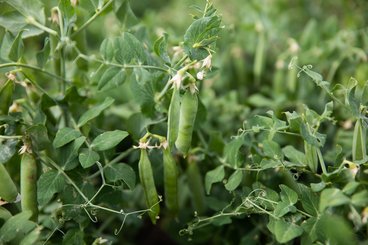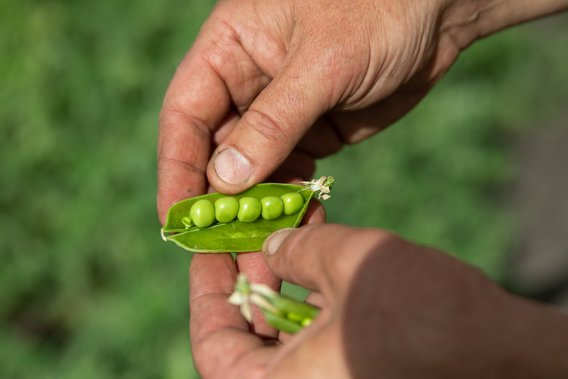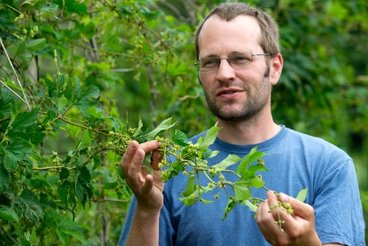The SROC horticultural science research and outreach program is dedicated to generating information and tools for the commercial fresh market and processing vegetable industries in Minnesota.
We share our research and management insight at educational conferences, field days, workshops, and through the University of Minnesota Extension Yard and Garden website. Follow us on Twitter @SROCHort to stay up-to-date!
Processing Vegetable Crops
Minnesota harvests more acres of sweet corn and green peas for processing (canning and freezing) than any other state. The processing industry is centered in south-central and south-eastern Minnesota, and the SROC is in the center of that region. We perform collaborative research to improve sustainability and profitability of sweet corn and peas.
We collaborate with faculty and staff from the Departments of Soil, Water, and Climate and Plant Pathology. Industry and state financial support and collaboration comes from the MN Department of Agriculture, AFREC, NCIS, and MWFPA.
Examples of projects and results:
- We have learned that a cereal rye cover crop following sweet corn can reduce soil nitrate concentration after harvest and before the subsequent field corn crop, and sweet corn can provide a nitrogen credit to field corn that is similar to soybean.
- We are helping to update tools for improving accuracy of hail yield loss estimates in sweet corn.
- We are studying how a novel disease (bacterial leaf streak) is affecting processing sweet corn in our state.
- We carry out the largest public processing pea variety trial in the country to help processors determine which varieties are suited to the needs of the industry in our region.
Fresh-market vegetables
We develop science-based resources for efficiently and sustainably producing high-quality vegetables to improve the quality of life for growers and consumers alike. We also aim to enhance soil quality and responsible use of natural resources. We collaborate with faculty, staff, and students from the Departments of Horticultural Science and UMN Extension. Financial support is provided by the MN Department of Agriculture.
Examples of projects and results:
- We are working with latinx growers to study chile peppers and the potential for working with local restaurants to supply local chiles.
- We are working to understand nitrogen requirements of broccoli following a nitrogen-fixing pea & oat cover crop.
- We have studied impacts of raised beds on carrot size, shape, and yield. Publication coming soon!
- Some new projects starting in 2021:
- A widely collaborative variety trial, with Seedlinked, to learn more about black rot and Alternaria diseases in broccoli.
- A study to determine phosphorus removal rates by tomatoes in high-P fertility conditions.
- A collaboration to learn about how inter-row cover crops might help with high field moisture in the spring.
Hops
Hops are a perennial bine, and the female inflorescence is used to add bitterness and aroma to beer. Midwest craft breweries are interested in using locally grown raw products, and hops provide a potentially profitable source of diversification to farmers.
We began hops research in 2010 and are currently collaborating with the UMN Department of Agronomy and Plant Genetics to breed hops for Midwestern growers, supported by the the MN Department of Agriculture. Our goals are agronomic acceptability and brewing quality. We currently have multiple promising selections in on-farm trials, and some of these show up in commercial beers occasionally. Within 3 years, we hope to have a hop that growers and brewers are eager to use.



